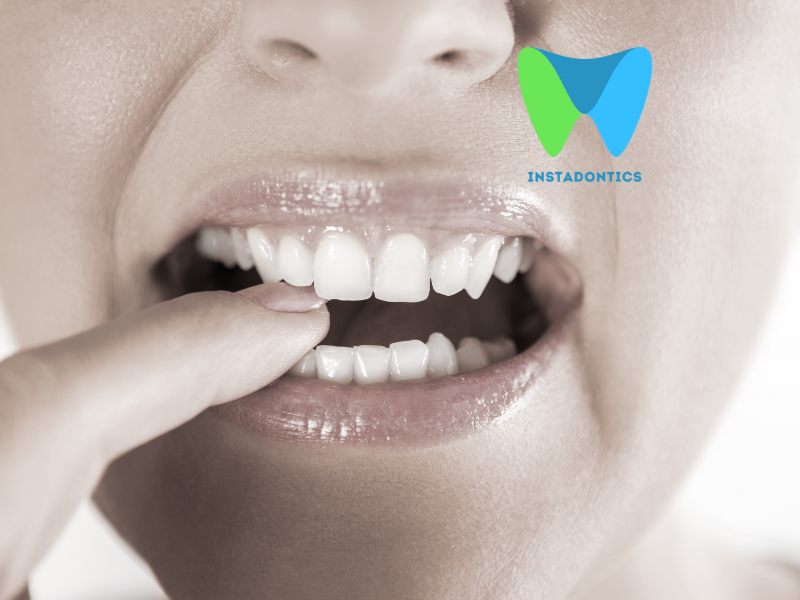Imagine enjoying a crunchy snack when suddenly, a sharp pain shoots through your tooth. This could be a sign of Cracked Tooth Syndrome (CTS), a common dental issue that is often difficult to diagnose. Early detection and treatment are crucial to prevent further complications. Let’s delve into what Cracked Tooth Syndrome is, its causes, symptoms, diagnosis, treatment options, and prevention strategies.
What is Cracked Tooth Syndrome?
Definition
Cracked Tooth Syndrome refers to a situation where a tooth has a crack that is too small to appear on X-rays but large enough to cause pain. This condition often affects molars, which bear the brunt of chewing forces.
Types of Cracks
- Craze Lines: Tiny cracks in the outer enamel. These are common and usually harmless.
- Fractured Cusp: When a piece of the tooth’s chewing surface breaks off, often around a filling.
- Cracks Extending into the Gum Line: If the crack extends below the gum line, the tooth might need extraction.
- Split Tooth: A crack with distinct segments that can be separated.
- Vertical Root Fracture: Cracks that begin in the root and extend upward. Often, these show minimal symptoms but may lead to infection.
Common Causes of Cracked Tooth Syndrome
Hard Objects
Chewing on hard items, such as ice, nuts, or hard candies, can subject teeth to intense pressure. This pressure can lead to cracks and fractures, particularly if individuals have a habit of consuming these items frequently. When teeth are subjected to extreme hardness, especially when combined with the force exerted during biting, the risk of structural failure increases. Additionally, the enamel, which protects the teeth, may wear down over time, making them more vulnerable to cracks and damage.
Teeth Grinding (Bruxism)
Bruxism is a condition characterized by the grinding or clenching of teeth, often occurring unconsciously during sleep or moments of stress. This behavior exerts significant pressure on the teeth, which can lead to wear and tear, as well as cracks. Continuous grinding can also lead to joint issues in the jaw, resulting in discomfort and further dental problems. People who suffer from bruxism may notice signs such as tooth sensitivity, flattened teeth, or jaw pain, all of which can point to the cracks that may develop over time.
Trauma or Injury
Accidents or injuries that involve a direct impact to the mouth can result in immediate damage to the teeth. For example, falls, sports injuries, or car accidents can cause teeth to crack or break. The severity of the injury often dictates whether the tooth will only show minor cracks or if it will completely fracture. Immediate dental evaluation is essential after any traumatic injury, as prompt treatment can sometimes save the tooth and prevent further complications.
Large Fillings
Teeth that have extensive fillings may be more prone to cracking due to the removal of a significant portion of the tooth’s natural structure. Large fillings create a compromised area, as the core of the tooth becomes less stable. The filling material may not expand and contract with the same resilience as natural tooth enamel, making these teeth susceptible to stress-related fractures, especially when exposed to extreme temperatures or pressure during chewing.
Age and Wear
As individuals age, their teeth naturally undergo wear and tear, leading to increased susceptibility to cracks. Over the years, factors such as erosive wear from acidic foods and beverages, grinding, and general use can compromise the integrity of teeth. Additionally, enamel tends to thin with age, diminishing its protective function. The cumulative effect of aging on dental health can lead to cracks and other issues, stressing the importance of regular dental check-ups to monitor and address potential problems.
Maintaining good dental habits, avoiding hard objects, addressing teeth grinding, practicing safety during sports, and seeking dental care regularly can help mitigate the risk of cracked teeth. Being aware of these factors can empower individuals to take proactive measures for their dental health.
Symptoms of Cracked Tooth Syndrome
- Pain When Chewing One of the most common symptoms is a sharp pain when biting down or chewing, especially when releasing the bite.
- Sensitivity to Temperature Cracked teeth often become sensitive to hot and cold temperatures, causing discomfort when eating or drinking.
- Intermittent Pain The pain may come and go, making it hard to pinpoint the exact cause or location of the discomfort.
- Swelling of the Gums Swelling or irritation of the gums around the cracked tooth can occur, indicating inflammation or infection.
- Difficulty Pinpointing Pain The pain might be difficult to locate, sometimes seeming to shift between different teeth.
Diagnosing Cracked Tooth Syndrome
- Visual Examination Your dentist will conduct a thorough visual examination to look for visible cracks or damage.
- Dental History Discussing your dental history, including any recent trauma or habits like grinding, helps in diagnosing CTS.
- Bite Tests Bite tests using special tools can help identify the exact tooth and location of the crack based on your pain response.
- X-rays Although not always visible on X-rays, they can help rule out other potential issues and identify cracks extending into the root.
- Dye Tests Applying a special dye to the tooth can make cracks more visible during the examination.
Treatment Options for Cracked Tooth Syndrome
- Bonding For minor cracks, bonding with a plastic resin can help restore the tooth integrity and prevent further cracking.
- Crowns cover the entire tooth, providing strength and protection against further damage. They are a common treatment for more significant cracks.
- Root Canal Therapy If the crack extends into the pulp (the tooth nerve), root canal therapy may be necessary to remove the damaged pulp and prevent infection.
- Extraction In severe cases where the tooth is beyond repair, extraction may be the only option to prevent further complications.
- Preventive Measures Using mouthguards, avoiding hard foods, and addressing habits like teeth grinding can help prevent future cracks.
Preventing Cracked Tooth Syndrome
- Avoid Hard Foods
- Steer clear of hard foods and objects that can put undue pressure on your teeth.
- Wear a Mouthguard
- If you grind your teeth at night, wearing a mouthguard can help protect your teeth from excessive force.
- Regular Dental Check-ups
- Regular visits to the dentist can help catch and address issues early, preventing minor cracks from becoming major problems.
- Treating Bruxism
- If you grind or clench your teeth, seek treatment for bruxism to reduce the risk of cracks.
- Maintain Good Oral Hygiene
- Good oral hygiene practices keep your teeth strong and healthy, reducing the risk of cracks.
Living with Cracked Tooth Syndrome
Managing Pain Over-the-counter pain relievers and avoiding hard or sticky foods can help manage pain until you see a dentist.
Dietary Adjustments Soft foods and avoiding extreme temperatures can reduce discomfort from a cracked tooth.
Regular Monitoring Regular dental check-ups are crucial for monitoring the condition of your cracked tooth and preventing further issues.
FAQs
Can a cracked tooth heal on its own?
No, a cracked tooth cannot heal on its own. Professional dental treatment is necessary to prevent further damage and alleviate pain.
How long can you live with a cracked tooth?
It’s best to seek treatment as soon as possible. Delaying treatment can lead to more severe issues like infection or tooth loss.
Is a cracked tooth an emergency?
It can be. If you experience severe pain, swelling, or signs of infection, seek immediate dental care.
Can cracked teeth be prevented?
While not all cracks can be prevented, you can reduce your risk by avoiding hard foods, wearing a mouthguard, and maintaining good oral hygiene.
What should I do if I suspect a cracked tooth?
If you suspect a cracked tooth, contact your dentist for an evaluation. Early diagnosis and treatment are crucial to prevent further complications.
Cracked Tooth Syndrome can be a painful and frustrating condition, but with early detection and appropriate treatment, you can manage the symptoms and prevent further damage. Remember to maintain good oral hygiene, avoid habits that put undue stress on your teeth, and seek professional help if you experience any symptoms of CTS.



